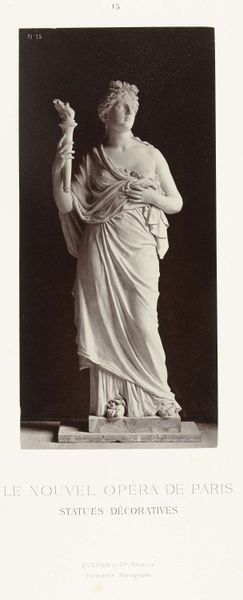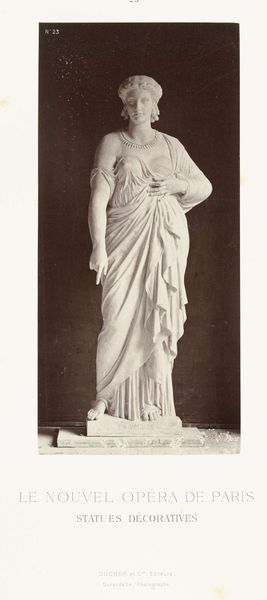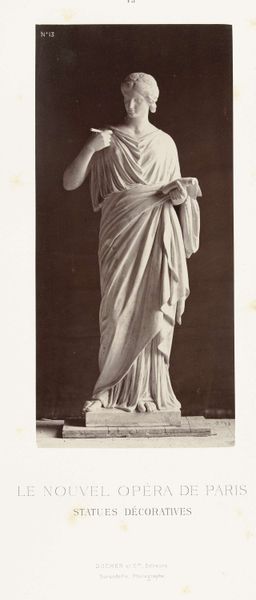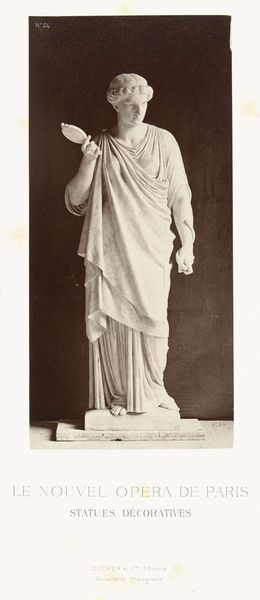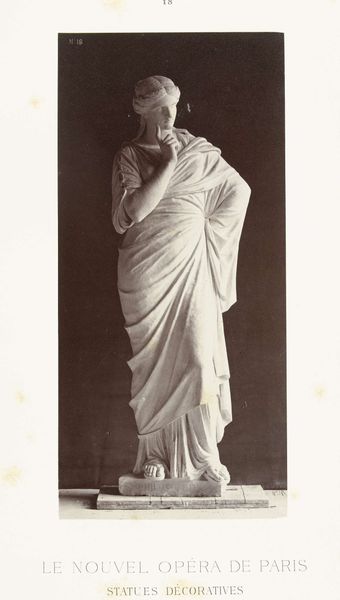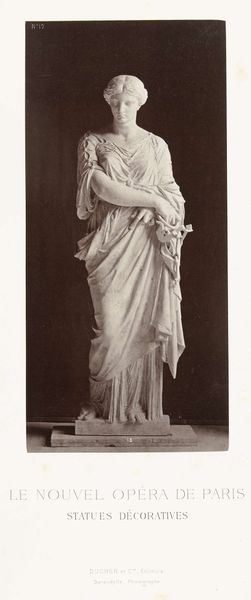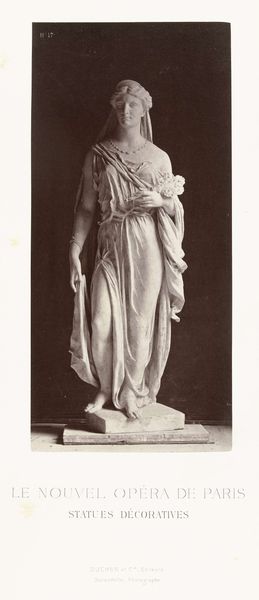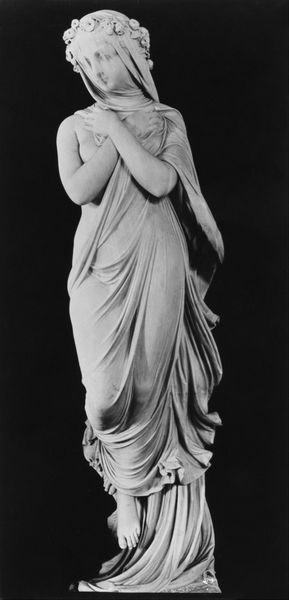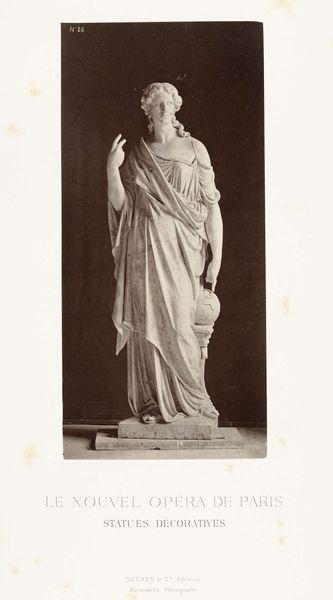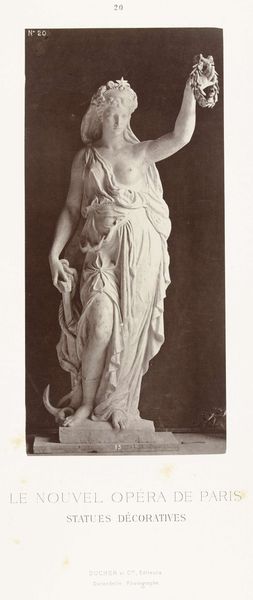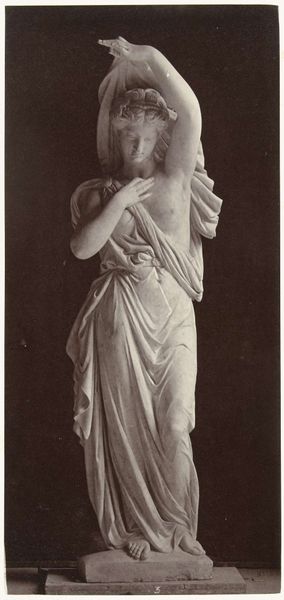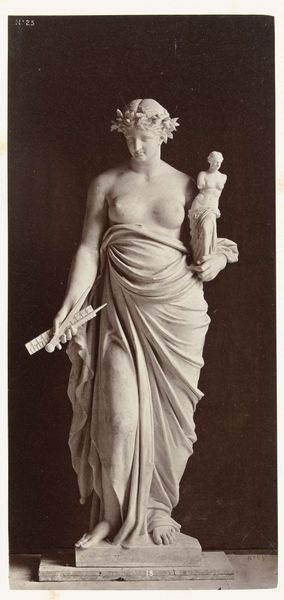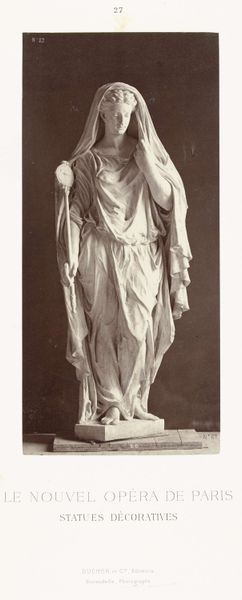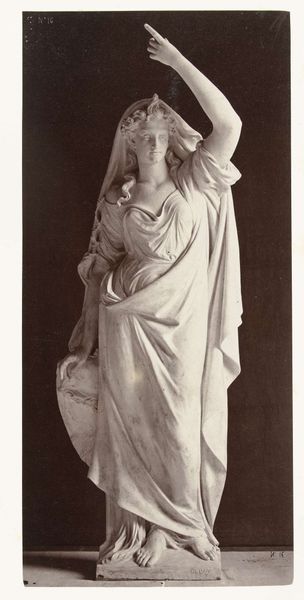
Dimensions: height 275 mm, width 128 mm, height 620 mm, width 438 mm
Copyright: Rijks Museum: Open Domain
Louis-Emile Durandelle captured this marble statue of a woman in a toga, sometime between 1839 and 1917. Marble is a metamorphic rock, transformed by intense heat and pressure, and its journey from quarry to artwork is a testament to human labor and skill. The making of this sculpture would have begun with the selection of a suitable block of marble, likely sourced from a quarry. The sculptor would have then used a variety of tools, including chisels, rasps, and polishing stones, to gradually reveal the figure within the stone. The process is both subtractive and additive, requiring careful planning, precision, and an intimate understanding of the material's inherent qualities. The smooth, cool surface of the marble lends a sense of classical elegance to the figure, enhancing the flowing drapery and serene expression. The whiteness of the marble also evokes purity and timelessness. Understanding the work and skill involved in the production of this sculpture allows us to appreciate the artistry and social context embedded within it. It is so much more than just a 'marble statue'; it is the crystallisation of many hours of labour and creative vision.
Comments
No comments
Be the first to comment and join the conversation on the ultimate creative platform.
